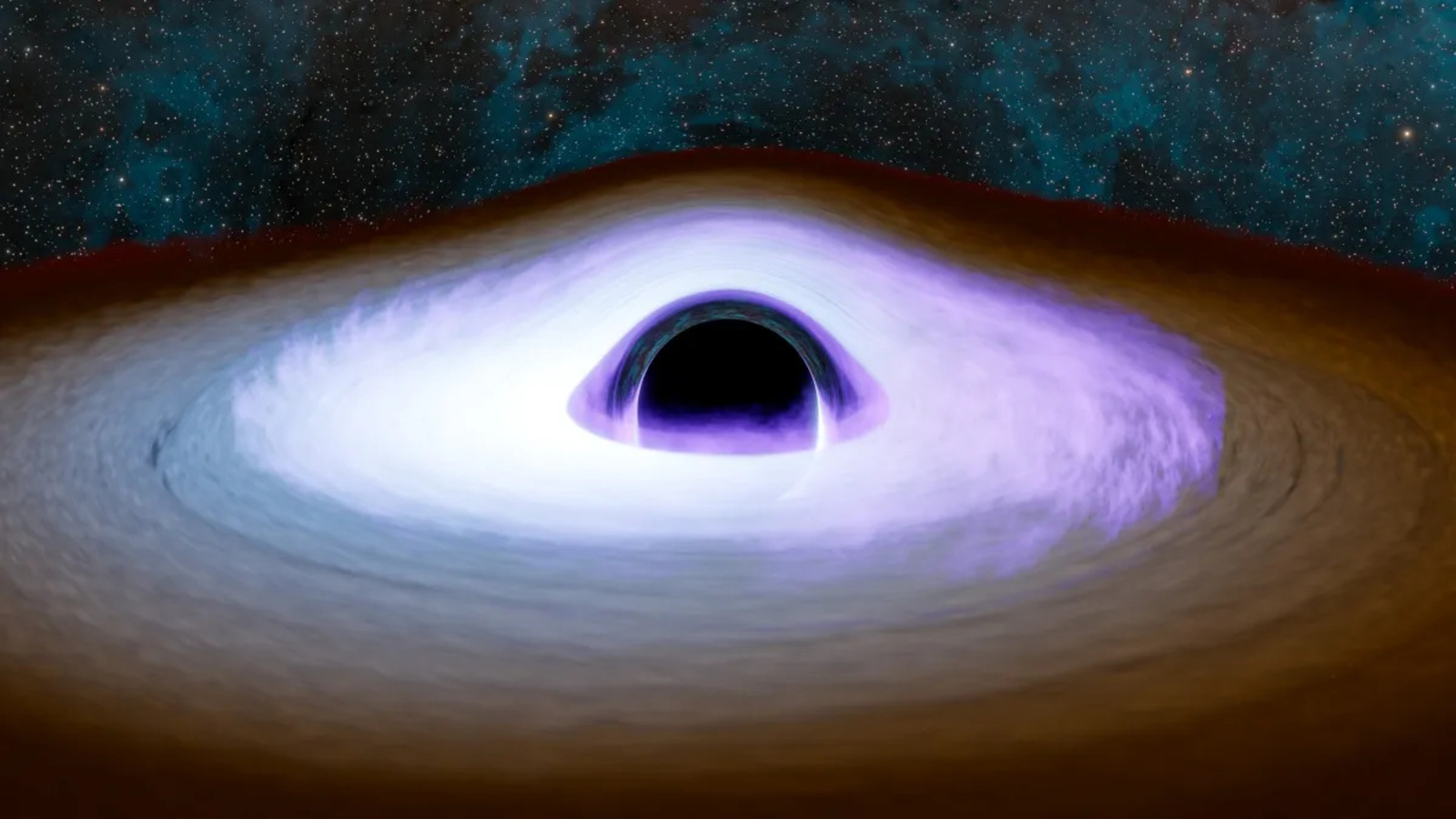A black hole’s bizarre “heartbeat” is forcing astronomers to reconsider how these cosmic heavyweights behave.
Observations of IGR J17091-3624 — a black hole in a binary system roughly 28,000 light-years from Earth — were taken using NASA’s Imaging X-ray Polarimetry Explorer (IXPE). Nicknamed the “heartbeat” black hole for its dramatic, rhythmic pulses in brightness, the object feeds on matter stolen from a companion star. The black hole’s pulses are the result of fluctuations in the superheated plasma swirling around it (also known as the accretion disk) and the inner region called the corona, which can reach extreme temperatures and radiate incredibly luminous X-rays.
IXPE measured the polarization — the direction of the black hole’s X-rays — to determine the alignment of its vibrations. The space probe recorded a surprising 9.1% polarization degree, which is much higher than theoretical models predicted, according to a statement from NASA.
Studying the polarization degree offers insight about the geometry of the black hole and motion of matter nearby. Typically, such high readings suggest the corona is viewed almost edge-on, where its structure appears highly ordered. However, other observations of IGR J17091-3624 don’t seem to match that picture, leaving scientists with a puzzling contradiction.
Astronomers tested two different models to help explain the recent observations of IGR J17091-3624. One posits that powerful winds are being launched from the accretion disk, scattering X-rays into a more polarized state even without an edge-on perspective. The other suggests the corona itself is moving outward at extraordinary speeds, causing relativistic effects that amplify polarization. Simulations of both scenarios reproduce the IXPE results, but each model challenges long-held assumptions about black hole environments.
“These winds are one of the most critical missing pieces to understand the growth of all types of black holes,” Maxime Parra, co-author of the study from Ehime University in Matsuyama, Japan, said in the statement. “Astronomers could expect future observations to yield even more surprising polarization degree measurements.”
Their findings were published May 27 in the journal Monthly Notices of the Royal Astronomical Society.
